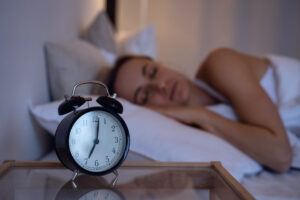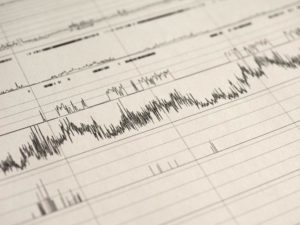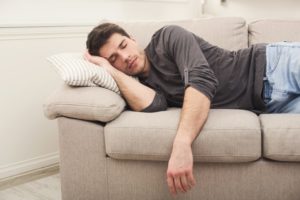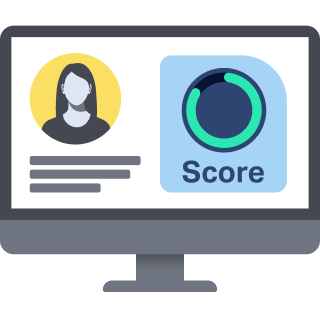Treatments for Shift Work Disorder
An estimated 20% of the population in industrialized countries works in a job with nonstandard shifts. Approximately 10% to 38% of these workers suffer from shift work disorder, a condition marked by excessive sleepiness when awake or an inability to sleep when needed.
Successfully adapting to shift work requires coaching the body to sleep at times that may feel unnatural. Many shift workers find they can minimize the symptoms of shift work disorder using a combination of medication, bright light therapy, and lifestyle modifications.
Light Therapy and Light Avoidance
Light is one of the most powerful drivers of the circadian rhythm, and exposure to light at targeted times may help you shift your sleep cycle. Specifically, bright light boosts alertness and suppresses the release of the sleep hormone, melatonin . Exposure to bright light can keep you awake and delay when you start to feel sleepy.
Using a bright light box before work or turning up the lights during a night shift may help you feel more awake. During periods when you are switching from one type of shift to another, applying bright light therapy in the morning may help you shift your circadian rhythm so you wake up and fall asleep earlier. Applying bright light therapy in the evening can shift your circadian rhythm later, helping you adjust to an upcoming night shift.
Conversely, for times when you need to sleep after a shift that ends in the middle of the day, wearing dark sunglasses when you come out of work may help minimize the sunlight’s alertness-promoting effects. Light can affect your sleep even when your eyes are closed , so it’s a good idea to use blackout curtains or eye shades to sleep.
Some studies show that a combination of bright light therapy and light avoidance may ease fatigue, minimize work errors, improve mood, and set the stage for better sleep, but other studies have found conflicting results . The success of light therapy might depend on the type of shifts you work and how many days in a row you keep the same schedule.
Melatonin Supplements
Melatonin is a sleep-promoting hormone the body usually produces in the evening. When you are working non-standard shifts, taking melatonin supplements at other times of the day may help prepare your body for sleep. The American Academy of Sleep Medicine notes that melatonin supplements can help night shift workers sleep during the day, although this does not necessarily lead to better alertness during the work shift.
Melatonin supplements have a relatively low risk of side effects. However, melatonin — like all supplements — are not regulated by the FDA, and they may carry impurities or inaccurate dosages. Although melatonin supplements are commonly available over the counter, it’s best to proceed under the advice of a doctor.
Shift Work Sleep Disorder Medication
Medication may help manage insomnia or sleepiness, though shift work medication is not a substitute for sleep. Always consult your doctor before starting a new medication or changing your dose.
Wakefulness-Promoting Medications
The Food and Drugs Administration (FDA) has approved two wakefulness-promoting agents for treating shift work disorder, modafinil and armodafinil . Taken one hour before work, these drugs may help boost alertness during your shift. It’s important to keep in mind that wakefulness-promoting medications may not restore alertness to the point where it is safe to drive a vehicle or perform dangerous actions at work. Also, modafinil and armodafinil can have side effects and they may be habit-forming.
Sleep-Promoting Medications
Prescription sleep aids, such as benzodiazepines, can be used to help facilitate sleep for shift workers. Be wary of taking sleep medications too close to the start of your shift, as they may raise the risk of accidents if drowsiness does not wear off in time. Sleep medications might worsen existing sleep disorders such as sleep apnea, and they may be habit-forming . It’s best to consult with your physician about the dosage and timing of sleep promoting medications for your particular schedule.
Lifestyle Changes
Shift work disorder should be diagnosed and treated by a professional, but all shift workers can benefit from certain habits that help the body adjust to circadian rhythm changes:
- Minimize Disturbances: It can be difficult to avoid noise and light when sleeping during the day. Talk to your household about scheduling noisy activities at times when you don’t need to sleep. In the bedroom, consider using an eye mask or black out curtains, turn off phone notifications, and consider using earplugs or a white noise machine if you are bothered by traffic or other background noise.
- Catch Up on Sleep: Many shift workers accumulate sleep debt , especially when working shifts that are longer than eight hours. Lost sleep may be partially recovered on days off to avoid the long-term risks of sleep deprivation. If you’re able to choose your shifts, try to schedule enough days off to catch up on sleep.
- Take Naps: Naps are a useful way to make up sleep on days off. Also, a short nap during your shift may boost alertness on the job or on the drive home. If you’re able to nap at work, bring an eye mask and try to nap at times that fit with your current sleep-wake schedule. Limiting the nap to 20 minutes can help you avoid the grogginess that occurs when waking up from deep sleep.
- Stay Alert: Many shift workers find that caffeine or other stimulants help them stay alert on the job, though the American Academy of Sleep Medicine cautions that caffeine should not be consumed too close to a sleep period as it may impair sleep.
- Stay Active: Regular exercise is an important component of sleep hygiene. Carefully timed exercise may help regulate the sleep-wake cycle for shift workers. That said, shift workers who work in physical occupations should take care not to exacerbate fatigue by over-exercising in their time off.
- Eat a Balanced Diet: To avoid blood sugar spikes and accompanying fluctuations in energy, try to eat a diet rich in fruit and vegetables and low in high-sugar or processed foods.
- Practice Good Sleep Hygiene: Shift workers may benefit from general advice for improving sleep such as keeping a regular bedtime routine, using relaxation techniques, and avoiding screen time before bed.
If you have flexibility when choosing your shifts, try to minimize switching between day and night shifts , and aim to maintain a similar sleep-wake schedule on your days off. Those who work rotating shifts may find it helps to adjust bedtimes by small increments in anticipation of a new work schedule. Some studies have found that delaying shifts is easier on the body than making shifts progressively earlier.
Living With Shift Work Disorder
If you’re finding it difficult to cope with shift work, ask your doctor or counselor for solutions that fit your situation.You can also seek support from friends and family, perhaps asking them to take over certain tasks at home so you can sleep uninterrupted. You may be able to trade off on favors if your shifts leave you free time when most people are working.
Shift workers have a higher risk of traffic and work accidents, especially after shifts ending between 2 a.m. and 6 a.m. , when the tendency to sleep is at its strongest. If you anticipate being sleepy during your commute, consider taking public transport or asking a family member to drive you. At work, try to schedule activities that require concentration at the times you feel most alert.
Remember that sleep deprivation may affect you even if you don’t realize you are sleepy. Caffeine, energy drinks, and bright lights can help mask some effects of sleep loss, but they are not a substitute for receiving enough sleep.
Sleep deprivation due to shift work is linked to a host of potential negative consequences including drowsy driving accidents, dangerous workplace mistakes, and reduced well-being. Long-term sleep deprivation may also contribute to the development of chronic diseases such as type 2 diabetes, cancer, and heart disease. It’s important for employers, employees, and public policy makers to work together to improve sleep and quality of life for shift workers.
Medical Disclaimer: The content on this page should not be taken as medical advice or used as a recommendation for any specific treatment or medication. Always consult your doctor before taking a new medication or changing your current treatment.
References
20 Sources
-
Sack, R. L., Auckley, D., Auger, R. R., Carskadon, M. A., Wright, K. P., Jr, Vitiello, M. V., Zhdanova, I. V., & American Academy of Sleep Medicine (2007). Circadian rhythm sleep disorders: part I, basic principles, shift work and jet lag disorders. An American Academy of Sleep Medicine review. Sleep, 30(11), 1460–1483.
https://pubmed.ncbi.nlm.nih.gov/18041480/ -
Olson, J. A., Artenie, D. Z., Cyr, M., Raz, A., & Lee, V. (2020). Developing a light-based intervention to reduce fatigue and improve sleep in rapidly rotating shift workers. Chronobiology International, 37(4), 573–591
https://pubmed.ncbi.nlm.nih.gov/31823658/ -
Gupta, A., Roth, T., Roehrs, T., & Drake, C. L. (2019). Shift work: A perspective on shift work disorder-Is prevention the answer?. Journal of Clinical Sleep Medicine, 15(12), 1863–1865.
https://pubmed.ncbi.nlm.nih.gov/31855173/ -
Figueiro, M. G., Plitnick, B., & Rea, M. S. (2014). Pulsing blue light through closed eyelids: effects on acute melatonin suppression and phase shifting of dim light melatonin onset. Nature and Science of Sleep, 6, 149–156.
https://pubmed.ncbi.nlm.nih.gov/25506253/ -
Bjorvatn, B., Pallesen, S., Waage, S., Thun, E., & Blytt, K. M. (2021). The effects of bright light treatment on subjective and objective sleepiness during three consecutive night shifts among hospital nurses – A counter-balanced placebo-controlled crossover study. Scandinavian Journal of Work, Environment & Health, 47(2), 145–153
https://pubmed.ncbi.nlm.nih.gov/33080034/ -
Savage, R. A., Zafar, N., Yohannan, S., & Miller, J. (2020). Melatonin. In StatPearls. StatPearls Publishing.
https://pubmed.ncbi.nlm.nih.gov/30521244/ -
Morgenthaler, T. I., Lee-Chiong, T., Alessi, C., Friedman, L., Aurora, R. N., Boehlecke, B., Brown, T., Chesson, A. L., Jr, Kapur, V., Maganti, R., Owens, J., Pancer, J., Swick, T. J., Zak, R., & Standards of Practice Committee of the American Academy of Sleep Medicine (2007). Practice parameters for the clinical evaluation and treatment of circadian rhythm sleep disorders. An American Academy of Sleep Medicine report. Sleep, 30(11), 1445–1459.
https://pubmed.ncbi.nlm.nih.gov/18041479/ -
Provigil: Full Prescribing Information. (2015, January). Food and Drug Administration., Retrieved April 1, 2021, from
https://www.accessdata.fda.gov/drugsatfda_docs/label/2015/020717s037s038lbl.pdf -
Nuvigil: Full Prescribing Information. (2017, February). Food and Drug Administration., Retrieved April 1, 2021, from
https://www.accessdata.fda.gov/drugsatfda_docs/label/2017/021875s023lbl.pdf -
Liira, J., Verbeek, J. H., Costa, G., Driscoll, T. R., Sallinen, M., Isotalo, L. K., & Ruotsalainen, J. H. (2014). Pharmacological interventions for sleepiness and sleep disturbances caused by shift work. The Cochrane Database of Systematic Reviews, (8), CD009776.
https://pubmed.ncbi.nlm.nih.gov/25113164/ -
Vanttola, P., Puttonen, S., Karhula, K., Oksanen, T., & HÄrmÄ, M. (2020). Employees with shift work disorder experience excessive sleepiness also on non-work days: A cross-sectional survey linked to working hours register in Finnish hospitals. Industrial Health, 58(4), 366–374.
https://pubmed.ncbi.nlm.nih.gov/32074541/ -
Richter, K., Acker, J., Adam, S., & Niklewski, G. (2016). Prevention of fatigue and insomnia in shift workers-a review of non-pharmacological measures. The EPMA Journal, 7(1), 16.
https://pubmed.ncbi.nlm.nih.gov/27486484/ -
National Heart, Lung, and Blood Institute (NHLBI). (n.d.). Circadian Rhythm Disorders., Retrieved April 1, 2021, from
https://www.nhlbi.nih.gov/health-topics/circadian-rhythm-disorders -
Saner, N. J., & Lee, M. J. (2020). Exercise: It’s only a matter of time. The Journal of Physiology, 598(21), 4755–4757.
https://pubmed.ncbi.nlm.nih.gov/32706397/ -
Khan, W., Jackson, M. L., Kennedy, G. A., & Conduit, R. (2021). A field investigation of the relationship between rotating shifts, sleep, mental health and physical activity of Australian paramedics. Scientific Reports, 11(1), 866.
https://pubmed.ncbi.nlm.nih.gov/33441601/ -
Kalmbach, D. A., Pillai, V., Cheng, P., Arnedt, J. T., & Drake, C. L. (2015). Shift work disorder, depression, and anxiety in the transition to rotating shifts: The role of sleep reactivity. Sleep Medicine, 16(12), 1532–1538.
https://pubmed.ncbi.nlm.nih.gov/26611952/ -
Monk, T. H., Buysse, D. J., & Billy, B. D. (2006). Using daily 30-min phase advances to achieve a 6-hour advance: Circadian rhythm, sleep, and alertness. Aviation, Space, and Environmental Medicine, 77(7), 677–686.
https://pubmed.ncbi.nlm.nih.gov/16856351/ -
Module 2. Desynchronization of Homeostatic and Circadian Processes | NIOSH. (2020, March 31). Centers for Disease Control and Prevention., Retrieved April 1, 2021, from
https://www.cdc.gov/niosh/work-hour-training-for-nurses/longhours/mod2/17.html -
Caruso, C. C., Baldwin, C. M., Berger, A., Chasens, E. R., Landis, C., Redeker, N. S., Scott, L. D., & Trinkoff, A. (2017). Position statement: Reducing fatigue associated with sleep deficiency and work hours in nurses. Nursing Outlook, 65(6), 766–768.
https://pubmed.ncbi.nlm.nih.gov/29216975/ -
Kecklund, G., & Axelsson, J. (2016). Health consequences of shift work and insufficient sleep. BMJ (Clinical research ed.), 355, i5210.
https://pubmed.ncbi.nlm.nih.gov/27803010/















